The 1970s country music scene was simmering with discontent. The smooth, polished “Nashville sound” felt inauthentic to a new generation of artists. They craved a return to country’s rootsy, rebellious spirit. Fueled by this desire, a group of iconoclastic singers, most notably Waylon Jennings and Willie Nelson, broke free from the Nashville machine and forged their own path. This outlaw movement, as it came to be known, brought raw energy and honest storytelling back to country music.

In 1965, chasing his musical dreams, Waylon Jennings headed to Nashville to record with RCA. Willie Nelson, already disillusioned by Nashville’s control over his music, warned Waylon it wasn’t the haven for artistic freedom he envisioned. Sure enough, Jennings soon encountered the stifling reality of the industry’s rules. Finding unlikely kinship with Johnny Cash, their Nashville apartment became a hotbed of creativity, fueled by both music and amphetamines. This electrifying partnership would not only forge a lifelong friendship, but also shake the foundations of commercial control in country music.
Nashville’s Grip Loosens
Jennings grew increasingly frustrated by the “Nashville establishment machine,” its stifling rules, and its control over artistic expression. The Grand Ole Opry, a symbol of the industry, dictated everything from appearance to song selection. Jennings famously declared, “They wouldn’t let you do anything… They kept trying to destroy me. I just went about my business and did things my way. You start messing with my music, I get mean.”
The “Nashville sound” was ripe for subversion. Inspired by previous musical rebels like Bob Wills, Hank Williams, Elvis Presley, and Buddy Holly, Jennings and Nelson yearned to return to country’s raw roots – the blues, honky-tonk, and rockabilly that thrived in the 40s and 50s. This desire fueled their fight for creative control.
In 1972, Jennings renegotiated his contract with RCA, securing the artistic freedom he craved. Nelson took a bolder step, leaving RCA entirely and signing with Atlantic Records in 1973. This move guaranteed him control over his future work.
With newfound autonomy, they embraced a rebellious image. Long hair replaced short cuts, rhinestones gave way to leather, and open discussions about social issues and the “drug culture” became commonplace. The term “outlaw country” began to appear, with some attributing it to Jennings’ 1972 song “Ladies Love Outlaws.” Others, like critic Dave Hickey, saw it as a broader label for artists defying Nashville’s formulaic approach. But we’ll cover all that a little further down in this article folks, for now let’s just say that regardless of its origin, the term gained traction, solidifying with the release of “Wanted! The Outlaws” in 1976. This compilation album, recorded at Nashville’s Hillbilly Central recording studios, featuring Jennings, Nelson, Jessi Colter, and Tompall Glaser, became the first million-selling country record, forever etching “outlaw country” into musical history.
The Outlaw Family Expands
Nashville in the early 70s was a battlefield. Not the kind with cannons and muskets, mind you, but a fight for the soul of country music. On one side, you had the rhinestone cowboys, all squeaky clean and singin’ about heartbreakin’ over teacups. On the other side? A ragtag bunch of rebels with guitars strapped tighter than their livers. These were the Outlaws, a motley crew led by the likes of Waylon Jennings, Willie Nelson, Kris Kristofferson, Johnny Cash & Merle Haggard – basically a who’s-who of country music legends who decided conformity was best left to polyester leisure suits.
Their music was a shot of moonshine straight to the soul. It wasn’t about sugar-coated love songs; it was about the grit, the heartache, the three A.M. regrets that come with living life on the edge. Sure, they may have blurred the lines between onstage and saloon brawls a bit much at times, but hey, at least their music had some damn character!
And the funny part? This whole “outlaw” thing wasn’t some marketing ploy cooked up by a New York record exec with a Stetson. These guys were living the life before it even had a name. They were singing about what they knew, what they felt, even if it made Nashville’s hairspray helmets stand on end. It was a rebellion born out of barrooms and backroads, a middle finger to the status quo, all wrapped up in a melody that twanged truer than a steel guitar string. So, the next time you hear a Waylon Jennings song about a drifter or a Willie Nelson tune about chasing the highway, remember – these guys weren’t playing dress-up. They were the real deal, the original outlaws who rewrote the rules of country music, one outlaw anthem at a time.
How Outlaw Became Outlaw
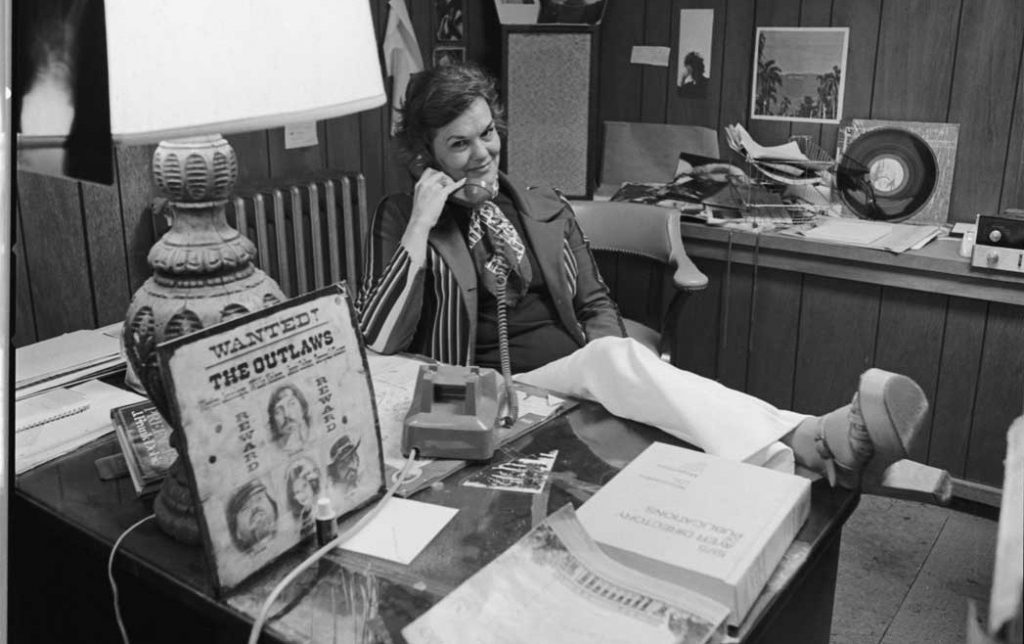
So, where did the name, “Outlaw Country” come from? Well that would be the result of a quick phone call to Tompall Glaser’s Hillbilly Central recording studios in Nashville answered by Hazel Smith. Now, Hazel was the studio’s publicist, as well as a music journalist and some say she was the outlaw movement’s “mother hen,” nurturing these musical rebels. Her life wasn’t about glitz, but a deep love for the music that ran through her. A true original.
The story goes that one afternoon in 1972 while sitting at her desk in the iconic studio she received a phone call from a DJ in Nashville with a question, “What do you guys call this new gritty form of country music being recorded there?”
She quickly thumbed through an old dictionary on her desk and there, starin’ her right in the face, was the answer: “Outlaw,” it read, “a person excluded from the benefit or protection of the law… a lawless person, one that is unconventional or rebellious.”

Eureka! Hazel slapped her knee. “These singers ain’t playin’ by Nashville’s rules,” she told that DJ. “They’re outlaws, singin’ their own truth! They’re outlaws and that’s outlaw music” she exclaimed. And just like that, a legendary form of American music got it’s official moniker. Thanks to Hazel’s wit and a well-placed dictionary, the outlaw country movement had a name that fit its rebellious spirit perfectly. Now that’s what I call a heapin’ helping of country smarts!
Set The Wayback Machine For 1948
Now, I feel like I have to stop here and take a brief trip back to what can only be called, the first incarnation of what came to be known as ‘Outlaw Country.’ I don’t mean the early 70’s in Austin, Texas but the real beginnings of the movment, more than 20 years before Willie & Waylon. Back before TV and rock & roll and even before the Grand Ole Opry became a household name outside of the Deep South. In the late 1940’s there were seeds of rebellion being sown in the hearts of a different kind of country singer. The real deal wasn’t the pampered cowboy in a baseball cap we see today. He was far from the multi-million dollar entity wearing $2,000 boots and enough bling to make a disco ball blush. This guy was all about the song, and sang it with a genuine twang of a broken hearted steel guitar weepin’ right alongside him.
The first outlaw was a drifter and a rebel with an old guitar and a voice that spoke of the truth, hard living, lonesome highways, and a yearning for something more authentic than the sillyness of the country music of the time. He stumbled onto the scene in 1948 and changed everything……
The First Outlaw
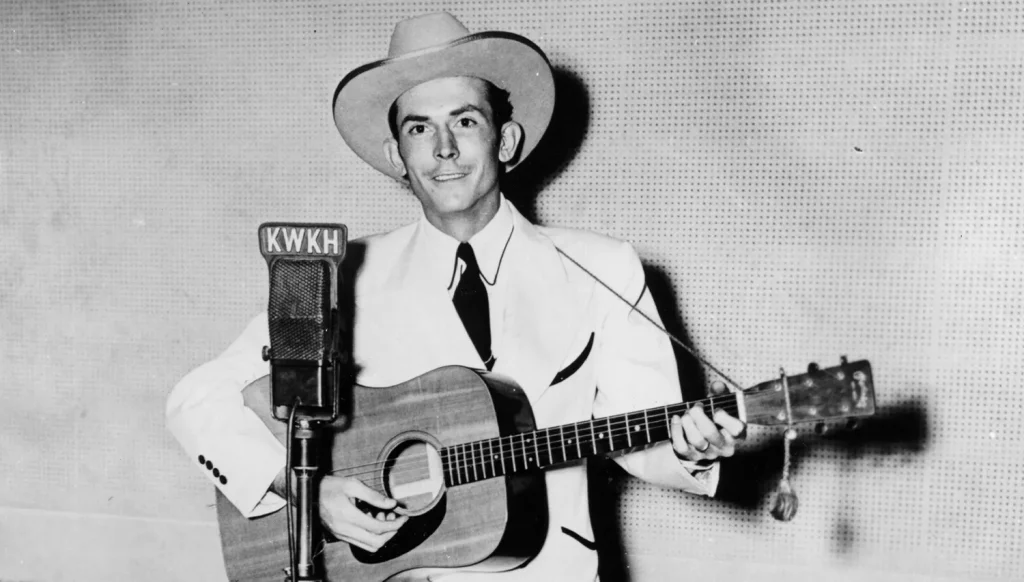
Hank Williams, wasn’t your typical Grand Ole Opry star. Sure, he could belt out a tearjerker ballad with the best of them, but there was a wild streak in him, a restlessness that often clashed with the Opry’s more polished image. In 1952, after a string of missed appearances (often fueled by his struggles with alcohol), Hank was famously fired from the very institution that helped launch his career.

But getting kicked off the Opry didn’t define Hank Williams. It was just a blip on the radar of a man who revolutionized country music. His songwriting was pure magic. He took the traditional themes of heartbreak, loneliness, and longing, and infused them with a raw honesty that resonated with audiences on a deep level. Songs like “Your Cheatin’ Heart,” “Hey Good Lookin’,” and “I Saw The Light” became instant classics, crossing over to pop charts and solidifying Hank’s place as a musical icon.
Before Hank, country music was often seen as simple, even corny. He brought a complexity to the genre, weaving in elements of blues and gospel, creating a sound that was both familiar and fresh. His influence can be heard in countless country artists, from Johnny Cash to Dolly Parton. He wasn’t just a singer-songwriter; he was a trailblazer, a man who dared to be different and, in doing so, changed the face of American music forever.
A Texas Troubadour

Good old Ernest Tubb – the “Texas Troubadour” whose life was a honky-tonk opera before there even were honky-tonk operas. This man practically invented the outlaw country template, both in his music and his, ahem, “social interactions.”
Back in 1957, Ernest, fueled by more than just Texas hospitality (if you know what I mean), decided to pay a visit to a Nashville bigwig named Jim Denny. Now, Denny wasn’t exactly Mister Hospitality himself – he’d just shown Hank Williams the door at the Grand Ole Opry, a move that didn’t sit well with Tubb. So, Ernest, with a .357 magnum strapped to his hip and a blood alcohol content that would make a bottle of moonshine blush, marched into the National Life building, ready for a showdown.
Except, plot twist! Denny wasn’t even there. So, what did our hero do? Well, being a true outlaw and all, he unleashed a round from his trusty revolver… towards a completely innocent bystander. Luckily, Ernest’s aim was about as good as his decision-making that night – he missed. Thankfully, the only thing wounded was Nashville’s reputation for politeness. Ernest, of course, got slapped with a public drunkenness charge, a story that became more legend than cautionary tale in the outlaw country world.
So, raise a glass (or, you know, a bottle) to Ernest Tubb, the man who walked the outlaw walk before Waylon and Willie even knew how to two-step!
The Unlikely Outlaw
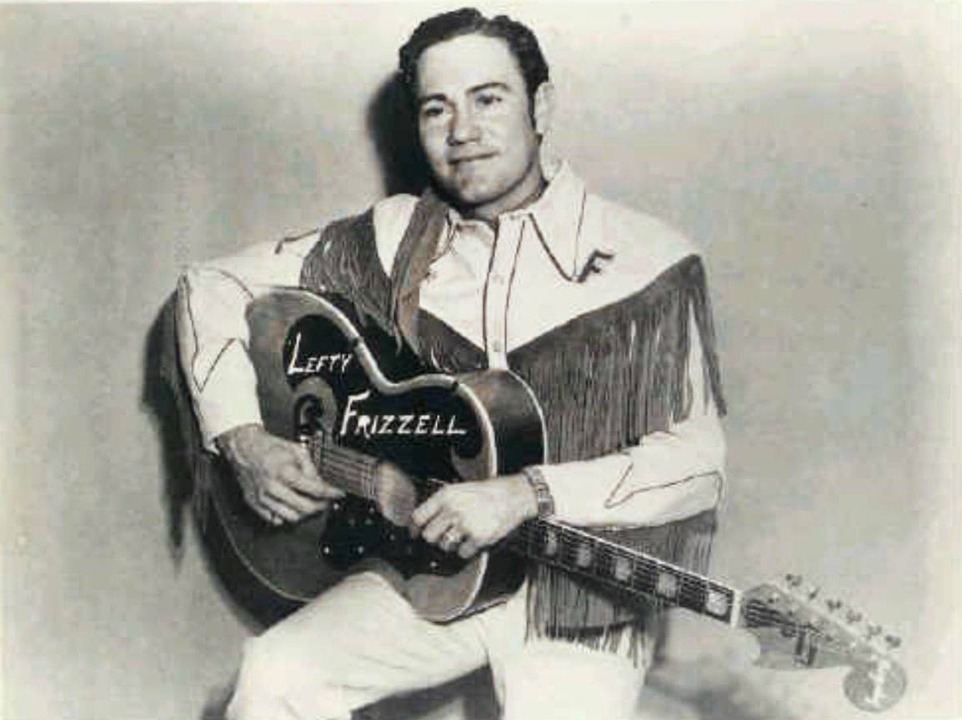
Lefty Frizzell, now there was a character. He wasn’t your good looking, perfectly-coiffed country crooner. Lefty was more like a velvet-voiced outlaw with a heart of gold (and a penchant for a good time). Born William Orville Frizzell in 1928, he grew up surrounded by the sounds of oil fields and honky-tonks, a melody that would weave its way into his music for years to come.
In July 1947, the 19-year-old Frizzell was arrested and jailed for having sex with an underage fan. He was charged with statutory rape, convicted the following month, and served six months in the county jail. Filled with guilt, he wrote poems to his wife from his cell; one of them would become his first big record.

After his release in late 1949, he was led away from music, and back to the oil fields to work with his father. However, soon he was performing in nightclubs again. By 1950, he had landed a regular job at the Big Springs, Texas nightspot “Ace of Clubs” where he developed a dedicated fan following.
Lefty’s claim to fame wasn’t just his smooth baritone, though that could melt butter easier than a Texas summer. It was his songwriting and revolutionary singing style. He pioneered what became known as “honky-tonk” – a sound that blended traditional country with a heavy dose of heartache and a touch of swagger.
Here’s the thing: Lefty didn’t sing about tractors and blue skies. He sang about the darker side of life, the lonely nights drowning your sorrows in a bar, the longing for love that never seems to come easy. But even in his most mournful ballads, there was a glimmer of hope, a hint of resilience that resonated with folks who felt a little down on their luck.
But Lefty wasn’t just a downer. He could deliver a honky-tonk two-step like nobody’s business! Tracks like “Long Black Veil” and “Saginaw, Michigan” became anthems for the working class, tales of lost love and hard times tinged with a defiance that made you want to tap your boots and sing along.
Lefty’s influence on country music is undeniable. Singers from George Jones to Merle Haggard have all cited him as a major inspiration. He wasn’t afraid to bend the rules, to push the boundaries of what country music could be. And in doing so, he created a sound that continues to resonate with audiences today. So next time you hear a twangy ballad with a touch of heartache, remember Lefty Frizzell, the honky-tonk pioneer who dared to be different and, in doing so, changed the course of country music forever.
No-Show Jones

George Jones? More like “No Show” Jones, am I right? This legend had a love affair with three things: drinkin’, drugs, and causing a ruckus. His wife, Tammy Wynette, could tell you all about it. Apparently, Mr. Jones liked to play cowboys and gangsters a little too literally, firin’ off guns in the middle of the night!

But George’s, voice could ache like a lovelorn coyote, also had a reputation for disappearing faster than a shot of good tequila. They called him “No Show Jones,” a nickname that clung to him tighter than glitter on a rhinestoned jumpsuit.
Why the vanishing act? Well, George, bless his heart, had a powerful fondness for the demon drink and its merry band of chemical companions. Let’s just say some nights, the party got a little too wild, leaving George a bit… indisposed… when it came to facing the stage lights. Imagine the disappointment of those fans, all gussied up in their best Nudie suits, only to be greeted by an empty stage and a tumbleweed rolling across the dance floor.
But hey, as they say, the show must go on, even if the star is currently napping it off backstage with a bottle of Jack Daniels as his pillow. In a way, George’s unreliability just added to his outlaw mystique. He wasn’t your average, predictable country crooner. He was a wild stallion, a musical maverick who played by his own (slightly tipsy) set of rules.
But hey, as George himself said, “If you’re gonna sing a country song, you’ve got to have lived it yourself.” And live it he did, even if it meant missin’ a few gigs or two. This outlaw wasn’t one for schedules, but when he did show up, his music was pure, raw emotion. A true contradiction walkin’, that George Jones.
The Bakersfield Sound
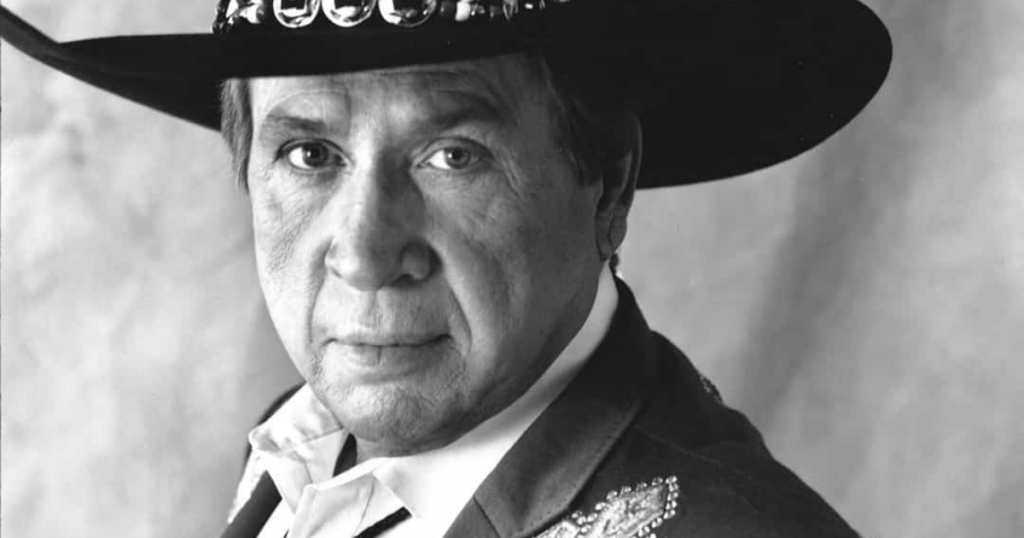
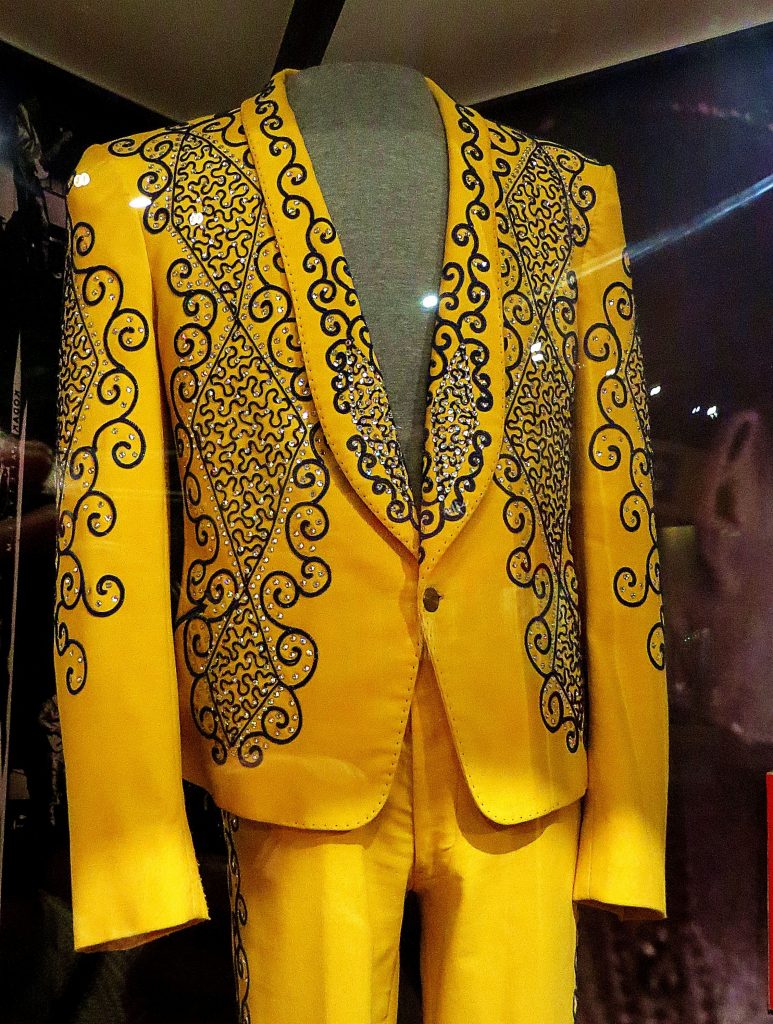
Saddle up for the saga of Buck Owens, – the original rhinestone renegade of country music! This ain’t your average, run of the mill sequin-suited, hair-sprayed Nashville kind of country dude, Buck was an utter original, one of the early outlaws of country music. Born Alvis Edgar Owens, Jr. in Sherman, Texas to a poor sharecropper family, he nicknamed himself “Buck” after the family mule. Now that’s outlaw. The family relocated to Arizona during the Dust Bowl years, where Owens learned to play guitar and mandolin eventually moving to Bakersfield in 1951.
Here’s the kicker: even when Buck did don a sequined suit, he sure as shootin’ wore it like a rhinestone rodeo champ! In fact many of those suites are on display at his hometown honky tonk, the Crystal Palace in Bakersfield today.
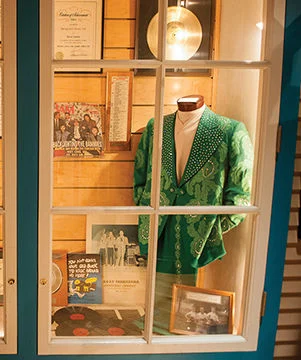
Now, he might not have been Nashville’s idea of the smoothest operator, but he had a swagger and a confidence that could outshine a mirrored disco ball. Buck proved you could be a rebel with a cause, a champion of the working class, AND rock some serious sparkle. Yep he wore the Nudie Suits and kept a neat and clean appearance but Buck Owens was straight up outlaw buddy, with a special chord bending twang you could only get from his trademark Telecaster guitar with a band of musical miscreants known as ‘The Buckaroos.’
And Owens was a Grade A Bakersfield bad boy, see, back in the day, Nashville was the undisputed kingpin of country music. If you wanted to make it big, you hopped a plane and kissed your mama goodbye. But not Buck Owens. No sirree. He planted his spurs firmly in his hometown of Bakersfield, California, and “bucked” the system (see what I did there?) and birthed the ‘Bakersfield Sound’ – a rowdy, electric brand of country that was as Bakersfield as an old pickup truck leavin’ a cloud of dust on a dirt road through an oilfield. Think twangy guitars cranked to eleven, Bakersfield drawls thicker than fog on a Kern County morning, and lyrics that celebrated the working man (and woman) without a smidge of sugarcoating bull pucky.
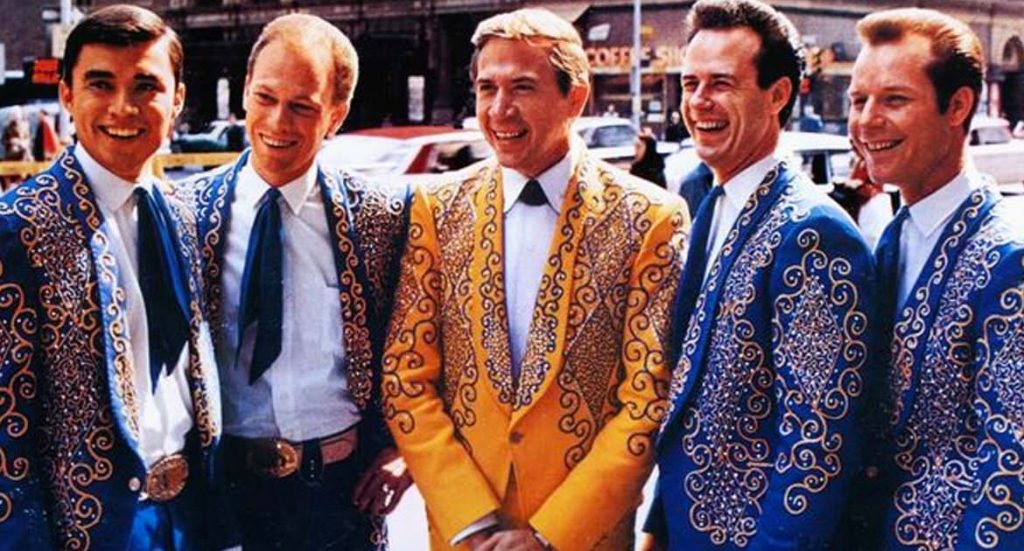
In 1965 country and rock & roll were about as compatible as a rattlesnake and a jackrabbit, but you see, Buck was a musical matchmaker. He made it clear that he was a huge fan of the Beatles and with a little finaglin’ he succeeded in bringin’ that Bakersfield twang to the rock and roll world when he arranged for the Beatles to do a cover of his best selling song, Act Naturally on the soundtrack to the movie Help.
The fact is the Beatles were huge fans of country music, John Lennon once said, “I heard country-and-western music in Liverpool before I heard rock’n’roll. There were established folk, blues and country-and-western clubs in Liverpool before rock’n’roll…I started imitating Hank Williams when I was fifteen, before I could play the guitar.”

“I used to love country music and country rock,” Ringo related in his book, “Ticket to Ride” and when asked, what were some of his influences as a musician unhesitatingly he replied, “Well, been listening to American country songs since I was a kid, y’know. Think all of us loved the sound. Maybe John and Paul put a little of that in their sound, y’know.”
So when it came time for Ringo to pick a song for the British version of the Help album, he went straight for the twang! “I sang ‘Act Naturally’ in ‘Help!,'” Ringo explained. “Found it on a Buck Owens record and said, ‘This is the one, lads,’ and they just said Ok!” Turns out, this would be the last official cover song The Beatles ever released, besides that quick “Maggie Mae” ditty on the ‘Let It Be’ soundtrack.
In America it was released as the B side of the single Yesterday and is a rock classic to this very day. In fact twenty-four years after the Beatles released their version, Owens and Ringo Starr teamed up for a duet remake in 1989.
Owens wasn’t just a maverick musician either, though. He was a champion for the common folk. He built Buck Owens’ Crystal Palace in Bakersfield, a honky-tonk haven where everyone, from oil rig roughnecks to beehive haired socialites, could two-step the night away. This massive music hall brings in top recording acts from all over the world and attracts thousands of tourists every year as well.
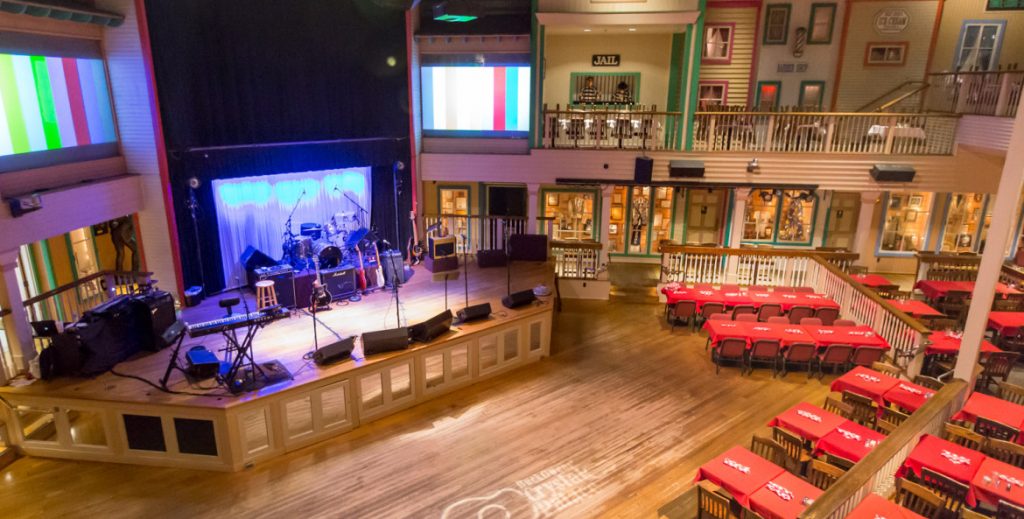
Although I call it a music hall it’s actually a nightclub, steak house and museum. The 30,000-some square foot three story complex features a full size concert stage, massive dance floor and even a 1972 Pontiac Grand Ville convertible, customized by famed Hollywood tailor Nudie Cohn behind the bar. In true outlaw fashion, Buck won that car from Elvis in a poker game and drove it straight from Memphis to the recording studio in Bakersfield, where the only thing shinier than the new paint job was the grin on Buck’s face.
The car cost $50,000 to build in 1972, and one just like it, made for Roy Rogers, sold for $300,000 in 2015. It’s got 19 guns, 23 horseshoes, a saddle, hand-tooled door panels and embroidered seats, and over 500 silver dollars. NOW THAT’S OUTLAW!
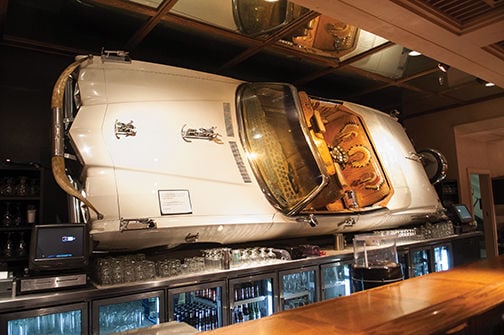
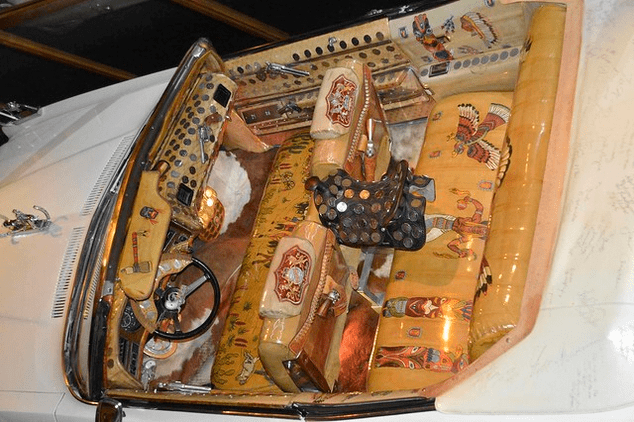
Buck’s generosity was legendary as well, from helping out struggling musicians to throwing charity concerts for folks down on their luck. This guy was Robin Hood with a Telecaster.
And don’t forget, Buck was a shrewd businessman too, with a nose for a gold mine (and a Bakersfield oil field or two). While other musicians were blowin’ their royalty checks on fancy cars and faster horses, Buck was investin’ in land like a squirrel stockpiling acorns for winter. He turned those investments into a multi-millionaire pile of cash – enough to make Scrooge McDuck jealous! He built shopping centers, office buildings and even got a street named after him in Bako.

But Buck wasn’t just about lining his own pockets. He built a broadcastin’ empire with radio stations scattered across the country, pumpin’ out that Bakersfield sound to every corner and paid his employees well to boot. This rhinestone rebel wasn’t only a singer and a philanthropist, he was a business tycoon in a broad brimmed Stetson, proving once again, you can have your cake (and eat it too) as long as you do it the Buck Owens way – smart, savvy, and with a whole lotta Bakersfield grit!
So, the next time you hear a country song that sounds a little rough and raw, with a Telecaster twang so sharp it could cut through steel, with a little less rhinestone and a little more guts, tip your Stetson to Buck Owens. He may not have been the smoothest operator country music ever saw, but he sure as shootin’ paved the way for a whole mess of musical outlaws who came after him. He was the original – the one who bucked the trend, built his own palace, and proved that sometimes, the best way to make it big is to do it your own dang way, Bakersfield style!
Just think, It Started In San Quentin

Hey, speakin’ of Bakersfield, in 1957, Merle Haggard, a twenty-year-old with more dreams than cash (and apparently not enough of the latter), decided to “borrow” some funds from a tavern in his hometown in Kern County, California. Let’s just say his attempt at “armed persuasion” wasn’t exactly textbook smooth, landing him a one-way ticket to San Quentin Prison for a fifteen-year vacation.

Now, San Quentin wasn’t exactly Club Med, but for young Merle, it turned out to be a bit of a musical boot camp. One fateful day, who rolls up but the Man in Black himself, Johnny Cash! Cash, bless his heart, was on a mission to bring a little country twang to the clink, and his prison performance lit a fire under Merle. Here he was, surrounded by clanging cell doors and questionable cafeteria stew, and Johnny Cash was beltin’ out tunes about Folsom Prison blues? Talk about inspiration!
Merle served three years, got himself paroled, and with a newfound appreciation for freedom (and maybe a slightly healthier way to make money), he grabbed his guitar and started strumming. Before you could say “San Quentin hootenanny,” Merle was topping the charts with the “Bakersfield sound,” a musical style that was about as rough and tumble as a bar fight at a rodeo.
So, the next time you hear a Merle Haggard song about hard times and redemption, remember – the man walked the walk before he ever talked the talk. And hey, who knows, maybe if that tavern owner had just served Merle a decent beer, country music history might be a whole lot different!
The Man In Black
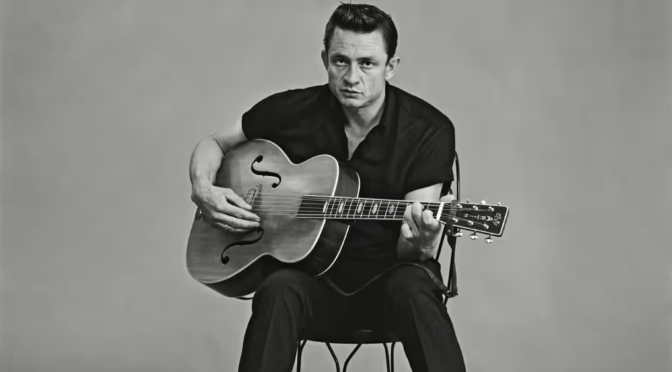
The Man in Black was living a life more colorful than a box of spilled crayons, but not in the good way. We’re talkin’ shades of self-destruction red, blackout blue, and the shaky-hands green of too many pills. By 1967, Johnny Cash was a walking disaster zone.
Amphetamines were his breakfast, lunch, and dinner, shows were cancelled like last week’s milk, and his singing voice sounded like a rusty hinge in a hurricane. Hospitals became his second home, jails his third, and car wrecks were just Tuesday nights. Johnny, bless his soul, looked like death warmed over, and that’s exactly how he felt.

One day, at the end of his rope (which, let’s be honest, was pretty frayed at this point), Johnny found himself in a Tennessee cave. It wasn’t exactly a luxury spa, but hey, desperate times call for desperate measures. He figured this might be a good spot for a little “meet and greet” with the Big Guy upstairs, you know, the whole “taking me from this earthly plane” business.
But something shifted in that dusty cave. Maybe it was a bat with a motivational speech, maybe a particularly insightful stalactite, but Johnny walked out a changed man. He vowed to kick his demons to the curb, trade the pills for gospel hymns, and get his life back on track. And let me tell you, folks, that’s exactly what he did. The Man in Black may have started out looking like death warmed over, but he sure as heck ended up a legend.
Kris Kristofferson
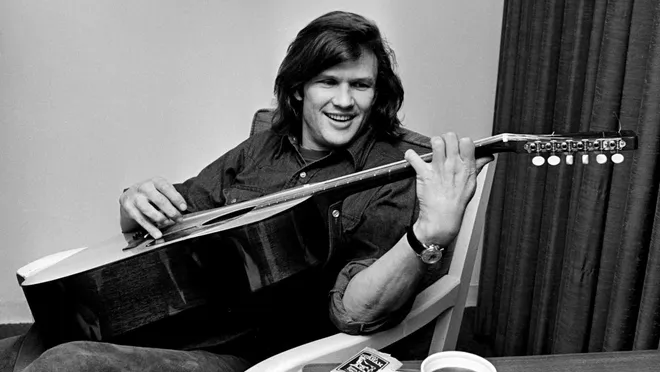
Kris Kristofferson. Former helicopter pilot, aspiring singer-songwriter, and the ultimate family rebel. See, Kris’s folks were all about tradition, the military kind. Stars and stripes, salutes at sunrise, the whole shebang. But Kris? Well, Kris had a different kind of uniform in mind – one made of blue jeans and dreams of musical stardom.
This, of course, did not go over well with the fam. Disowned faster than a faulty pair of boots, Kris knew he needed a plan, a BIG plan, to prove them wrong and launch his music career. Enter: Operation “Helicopter Harmony.”

Now, most folks might write a demo tape or something tame. Not Kris. He borrowed (okay, maybe “borrowed” is a strong word) a National Guard chopper, and landed that bad boy right smack on Johnny Cash’s front lawn! Talk about an entrance!
Cash, bless his heart, probably thought aliens were invading Nashville. But instead of blasting Kris with a shotgun, he listened to his music, specifically a little ditty called “Sunday Morning Comin’ Down.” And let me tell you, Cash was hooked faster than a catfish on a juicy worm. He recorded the song, Kris’s career skyrocketed, and the rest, as they say, is history.
Oh, and did I mention Kris went on to become a Hollywood hotshot too? He even snagged a Golden Globe for starring opposite the one and only Barbra Streisand in “A Star is Born.” So yeah, Kris might have ruffled some family feathers, but in the end, he proved them wrong in the most epic, helicopter-landing, music-making way possible. Take that, military tradition!
Hoss
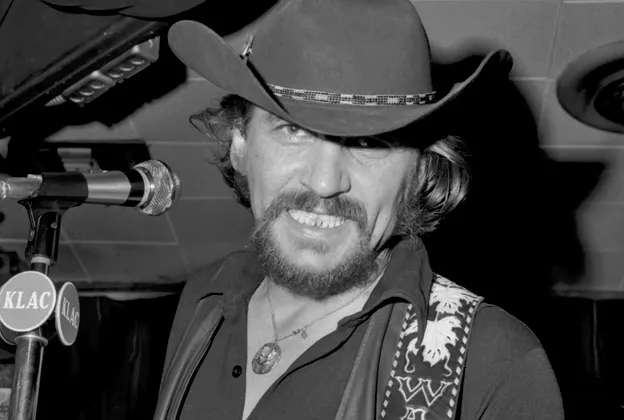
Waylon Jennings and Johnny Cash – living together in Nashville? Let’s just say it was a recipe for more trouble than a bar fight at a rodeo. This wasn’t exactly a sunshine and lollipops kind of friendship. Drugs, specifically that bad boy cocaine, became their new best friend, and Waylon’s habit went on a twenty-year bender that would make even Willie Nelson raise an eyebrow.
One fine day, while Waylon was recording a song (probably about heartbreak and honky-tonks, you know, typical outlaw stuff), the DEA decided to drop by the studio unannounced. Now, Waylon wasn’t exactly known for his minimalist approach to… well, anything. His stash was enough to make Pablo Escobar jealous. Problem was, by the time the fuzz came back with a proper search warrant, that mountain of white powder had vanished faster than a magician’s rabbit!

Let’s just say, “Don’t You Think This Outlaw Bit’s Done Got Outta Hand?” wasn’t just a song title for Waylon. He even wrote a little somethin’ somethin’ about the whole DEA incident:
“They came poundin’ through the back door in the middle of the song, They got me for possession of somethin’ that was gone, long gone.”
Fast forward a few years, and Waylon’s found himself playing dives and rock bars. Now, Waylon wasn’t one for sugar-coating things. Before each show, he’d grab the mic and lay down the law: “We’re gonna play country music… and we sure hope you like it. But if you don’t like it, you better keep your mouth shut, ’cause we will kick your ass.”
Talk about a man who knew his audience! Waylon wasn’t just an outlaw; he was the sheriff of straight-talkin’ country music, a musical gunslinger who wasn’t afraid to play by his own wild-west rules.
Shotgun Willie

Alright, y’all gather ’round and listen close, ’cause I’m about to tell you a tale of a true outlaw legend: Willie Nelson, the man they call “Shotgun Willie.”
This ain’t your typical rhinestone cowboy. Willie was more like a walking, talking outlaw ballad come to life. He wasn’t afraid to take matters into his own hands, especially when it came to protecting his family. Take the time his daughter Lana was tangled up with a no-good fella. Willie, bless his heart, marched right over there and gave the guy a good ol’ Texas two-step – with his bare hands! Let’s just say the message got delivered loud and clear.

But this ain’t the only time things got a little Wild West with Willie. Apparently, Mr. No-Good decided to return the favor with a drive-by shooting, peppering Willie’s house like a Thanksgiving turkey. Well, nobody messes with Willie’s digs and gets away with it! Willie, quicker than a rattlesnake strike, grabbed his M-1 rifle and sent a few rounds back in that fella’s direction. Let’s just say the message was received, loud and clear – again!
Then there was the time Willie ended a full-blown shootout in a Birmingham parking lot like it was nothin’ more than a barroom brawl. Here’s Willie, strolls out of his bus lookin’ like he’s headed to the beach, not a showdown, with twin revolvers strapped to his hips like oversized belt buckles. The cops are all riled up, ready to draw, but Willie just walks in, cool as a cucumber, and asks what all the fuss is about. And wouldn’t you know it, somehow, Willie just has this way about him. The tension dissipates faster than morning fog, cops holster their weapons, and there’s Willie, signing autographs like nothin’ ever happened.
And let’s not forget the time Willie sparked one up with President Carter’s son, right there on the White House roof! Now that’s some serious outlaw audacity. Here’s Willie, figurin’, hey, when opportunity knocks, and it has a great view, why not take advantage?
Willie Nelson, the king of outlaw country, a man who lived life by his own rules, a legend with a guitar and a whole lot of moxie.
The Wacko From Waco
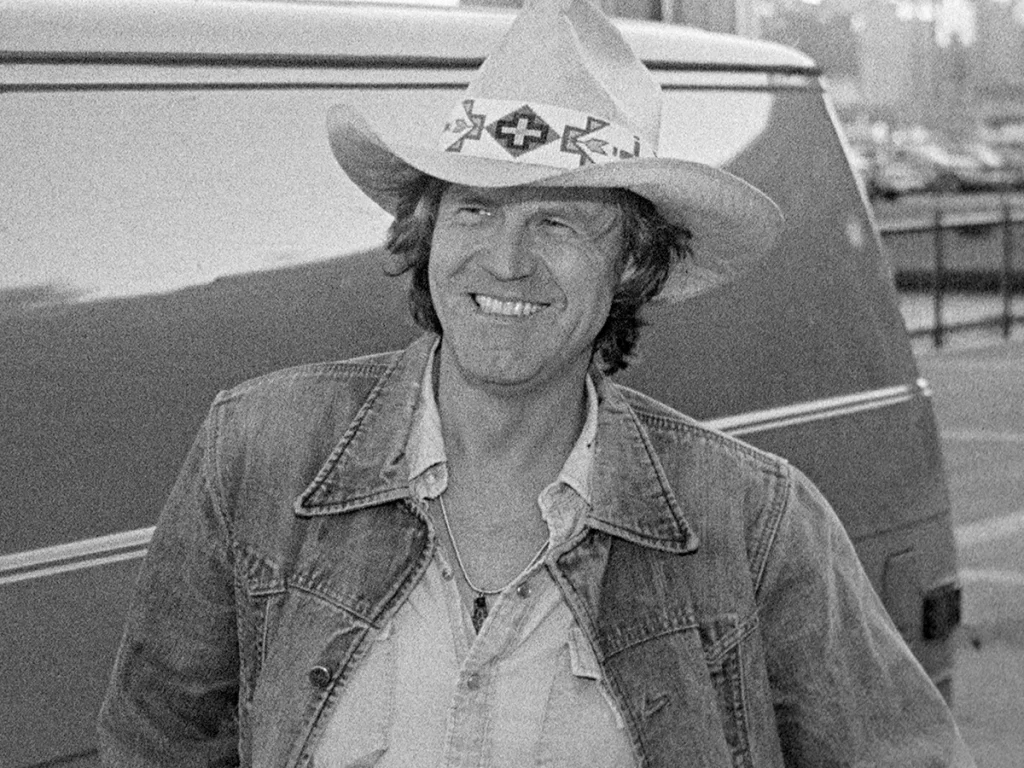
How do you describe Billy Joe Shaver? Picture this: a Texas tornado meets a blues ballad, throws on a worn cowboy hat, and grabs a guitar instead of a crowbar. That’s Billy Joe, folks, a songwriting legend with a life story wilder than a rodeo clown on bath salts.
Let’s start with the music. Billy Joe’s songs were pure, unadulterated Americana – gritty tales of love, loss, and the open road, all delivered in a voice like gravel dipped in honey. He wrote hits for Johnny Cash, Waylon Jennings, and a whole mess of others. But Billy Joe wasn’t your average Nashville songwriter. He was a rebel with a cause (and maybe a few outstanding warrants).

Now, we can’t talk about Billy Joe without mentioning the “Great Waco Misunderstanding” of 1973. Let’s just say there was an argument outside a bar, some overly enthusiastic target practice with a .44 pistol, and a bullet that (thankfully) missed its mark. (Though Billy Joe always maintained it was a warning shot, ahem.) The whole incident landed him in jail, but hey, at least it gave him some time to write some more tearjerker ballads, right?
Speaking of 1973, that same year Billy Joe decided fate wouldn’t stand in the way of his musical destiny. Armed with a demo tape and a whole lot of Texan charm (and maybe a hint of desperation), he convinced his way into Waylon Jennings’ dressing room. Now, Waylon wasn’t exactly known for his open-door policy, but Billy Joe, bless his heart, wouldn’t take no for an answer. He ended up playing his songs for a bleary-eyed Waylon, who, after hearing the raw brilliance of “I’m Just An Old Chunk of Coal (But I’m Gonna Be a Diamond Some Day),” decided this wild-eyed Texan was the real deal.
Billy Joe went on to become a cornerstone of the outlaw country movement, proving that sometimes the best music comes from folks who march to the beat of their own drum, even if that drumbeat involves a near-miss shooting and a healthy dose of defiance.
So, next time you hear a Billy Joe Shaver song, raise a glass to the man, the myth, the legend. A reminder that a little bit of crazy can lead to a whole lot of great music. Just maybe lay off the target practice outside the bar, alright Billy Joe? Alright.
Ain’t Nothing Like a Billy Joe Show
I kind of feel the need to include the video below for your enjoyment, this is an unearthed live performance and interview segments courtesy of the folks at The Texas Music Cafe in Waco, TX. Recorded live at The Cheatham Street Warehouse San Marcos, TX this film captures Shaver and his band absolutely on fire. With pristine sound quality, it’s a rare glimpse into a truly special night of Texas music.
Dive in and crank it up!
From Guitar Town to Copperhead Road

Steve Earle wasn’t one to mince words – or food. When a record exec tried to boss him around on album art, Steve flung his steak like a discus, right at the guy’s face. “Nobody tells me how to do it!” he declared. Years later, the album with the disputed cover (“Exit 0”) is still out there, a delicious reminder of Steve’s fiery independence. This outlaw went on to lose everything to heroin, except his house – “Couldn’t figure out how to pawn it,” he joked. A wild ride, this outlaw life.
Steve Earle is one of the most acclaimed singer-songwriters of his generation, and he ain’t your average balladeer. We’re talking about a songwriter so sharp he could pen a tearjerker while blindfolded and riding the maniacal bull at Gilly’s.

Earle honed his craft under the tutelage of giants like Townes Van Zandt and Guy Clark. Let me tell you, those are some serious storytelling credentials! It wasn’t long before Earle himself became a master weaver of words, crafting songs so good they had music royalty like Johnny Cash and Joan Baez lining up to sing them.
In 1986, Earle unleashed his masterpiece, “Guitar Town,” which rocketed to the top of the charts faster than a tumbleweed in a tornado. It’s a bona fide Americana classic, folks! And if that wasn’t enough, Earle’s 1988 hit, “Copperhead Road,” became so beloved it was officially declared a Tennessee state song in 2023! Talk about leaving your mark!
But Earle’s a restless artist, always pushing boundaries. Albums like “The Revolution Starts…Now,” “Washington Square Serenade,” and “TOWNES” all snagged Grammy Awards, proving his talent ain’t no one-trick pony. And just to show his respect for the roots that nourished him, Earle released “Jerry Jeff” in 2022, a whole album dedicated to the music of another songwriting hero, Jerry Jeff Walker.
So there you have it, the saga of Steve Earle – a true musical titan who respects his heritage while forging his own path and always expanding his musical horizons. Remember the name, folks, because this is a legend who’ll keep you captivated for many more years to come.
The Bard of Texas Tears, Towns Van Zandt
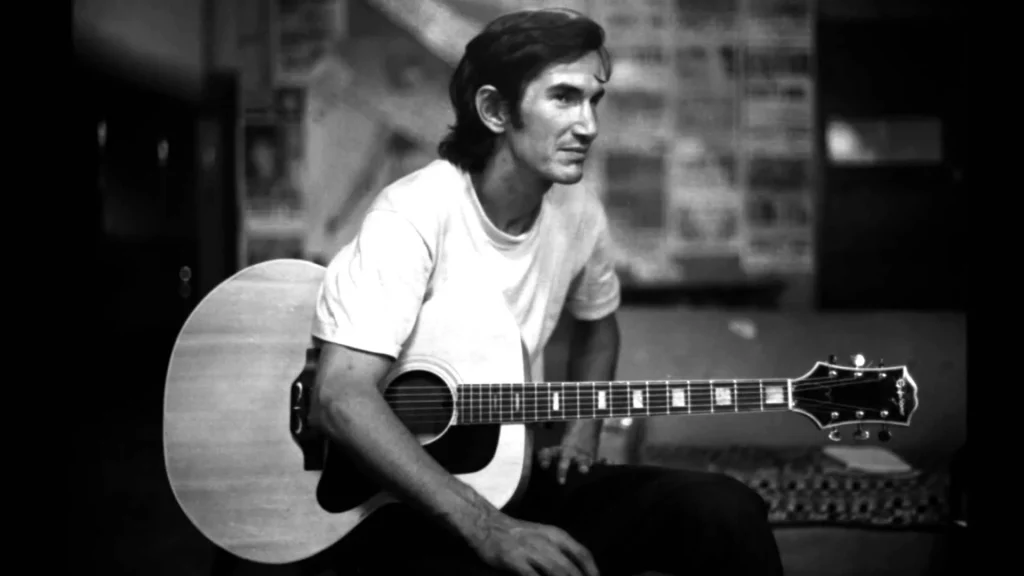
What can be written about Townes Van Zandt? The man Shotgun Willie called, “The best songwriter you’ve never heard of?”
Towns was a paradox wrapped in a song. Born in Texas in 1947, his music pulsed with the vastness of the Lone Star State, his lyrics as deep and weathered as the canyons that scar its landscape. He possessed a gift for crafting poetry that burrowed into the soul, exploring the complexities of love, loss, and the search for meaning in a world that often felt indifferent.

However, Townes battled a lifelong struggle with addiction. These demons cast a long shadow, sometimes bleeding into his performances and personal life. Yet, it’s undeniable that this very struggle fueled the fires of his creativity. The rawness of his lyrics, the melancholic beauty of his melodies, all carried an undeniable authenticity. You heard the ache of a heart that had loved and lost, the yearning for something more, the existential questions that plague us all.
Townes wasn’t afraid to delve into the darker corners of the human experience. His songs weren’t always easy listening, but they were honest, unflinching, and ultimately deeply human. He forced us to confront the shadows within ourselves, but also offered glimpses of grace and redemption. Despite his personal struggles, Townes left behind a legacy of breathtaking music. His influence on Americana is undeniable, and his songs continue to resonate with anyone who has ever grappled with the complexities of life. He was a flawed artist, yes, but his flaws were woven into the very fabric of his brilliance. Townes Van Zandt wasn’t just a singer-songwriter; he was a poet of the soul, forever etched in the heart of American music.
For example, Townes Van Zandt’s “Marie” is a haunting and raw story that chronicles a homeless man’s desperate struggle to survive and provide for his pregnant girl friend despite the cruelty of the world he’s found himself trapped in. It’s a very powerful song.
Rebel Meets Rebel
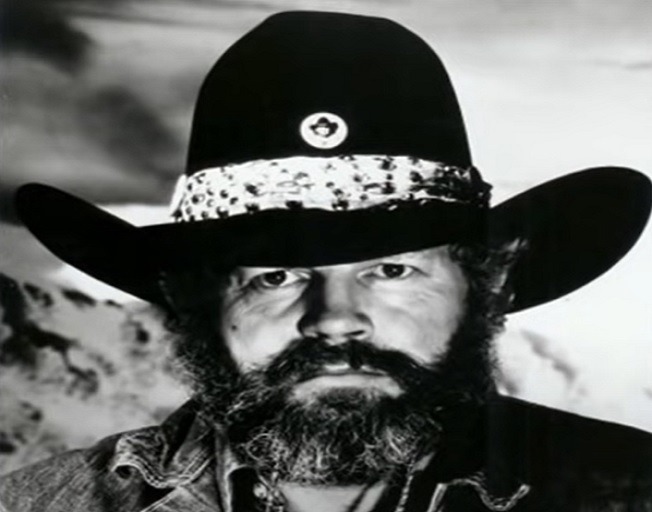
David Allan Coe, a fellow who could charm a judge and outrun a repo man on the same day, found himself staring at steel bars in 1967 at the tender age of 28. (Well, that’s the official story – whispers on the prison yard tell a wilder tale involving a stolen GTO and a misunderstanding with a rhinestone-studded jukebox. But hey, that’s for another time.)

This outlaw with a heart of gold (and a serious need for speed) wasn’t your average convict. No sir, David Allan Coe was a certified member of not just one, but possibly two outlaw motorcycle clubs! The kind of guy who’d show up to Waylon Jennings’ concert on his trusty steed, a chrome-plated stallion with more horsepower than manners, and decide, “Hey, what the heck?” Mid-song, he’d roar up on stage, microphone in hand, and serenade the audience with a voice as rough and smooth as Kentucky bourbon. Before you knew it, Willie Nelson himself would amble out, a sly grin on his face, ready to join the impromptu jam session.
Coe wasn’t done there, folks. This musical maverick even teamed up with Pantera, the band that could make your fillings vibrate, to record an album, proving he could rock with the best of them, even if his preferred mode of transportation had two wheels and a whole lot of attitude. David Allan Coe: a walking legend, a singin’ outlaw, and a testament to the fact that life’s most unforgettable journeys often start with a detour or two (and maybe a slightly sketchy detour involving a hot-wired car).
Johnny Paycheck
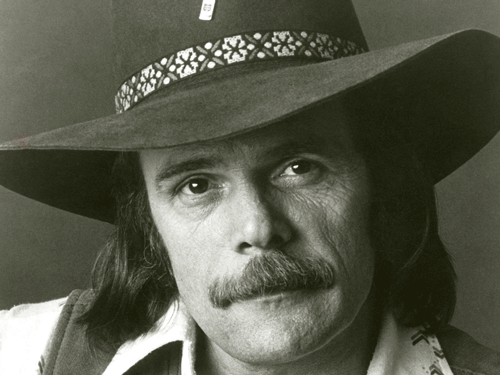
Johnny Paycheck, a man whose life story could be penned by a whiskey-soaked Hemingway, wasn’t exactly known for playing by the rules. Sure, he might have gotten his start singing sweet harmonies for George Jones, but let’s be honest, Paycheck was born to walk on the wild side. (Though rumors persist of a near-miss with dental school – thank goodness for our ears!)

This renegade with a voice like sandpaper and velvet (depending on the day and the bottle) carved his own path in country music. He became the champion of the working man, the one who belted out the iconic “Take This Job and Shove It” with enough fire to melt a foreman’s Stetson.
Paycheck wasn’t afraid of a little dust-up, be it with the law (ahem, that whole prison stint) or the Nashville establishment. He was a man who followed the beat of his own drum, even if that drum sometimes led him down a back alley filled with neon lights and questionable decisions. But hey, that’s what makes Johnny Paycheck a legend – a singer who wasn’t afraid to get a little dirt under his boots, both literally and metaphorically, in pursuit of a good song and a good time.
Hank Williams Jr.

In 1975, Hank Williams Jr. took a tumble down a Montana mountain that would make Wile E. Coyote jealous. We’re talking several hundred feet, folks! Luckily, the coyotes were busy yodeling with a barbershop quartet that day, because Hank somehow survived. It took multiple face and skull surgeries to put him back together, which explains why he started sporting that now-iconic beard. He also embraced the whole cowboy hat thing, way before it became a dime-a-dozen accessory for every country wannabe.

Now, Hank wasn’t exactly known for mincing words. He once compared a sitting president to, well, let’s just say the mustache wasn’t the only similarity he saw. And let’s not forget the time he yelled certain, not-so-nice words at folks in public. (Hey, at least his insults were creative, right?) Despite all that, or maybe because some folks found it entertaining, Hank got inducted into the Country Music Hall of Fame in 2020. So there you have it, Hank Williams Jr.: a survivor, a trendsetter (inadvertently or not), and a walking reminder that sometimes, the most outrageous cowboys end up in the history books.
The Duct Tape Messiah Who Died a Hero
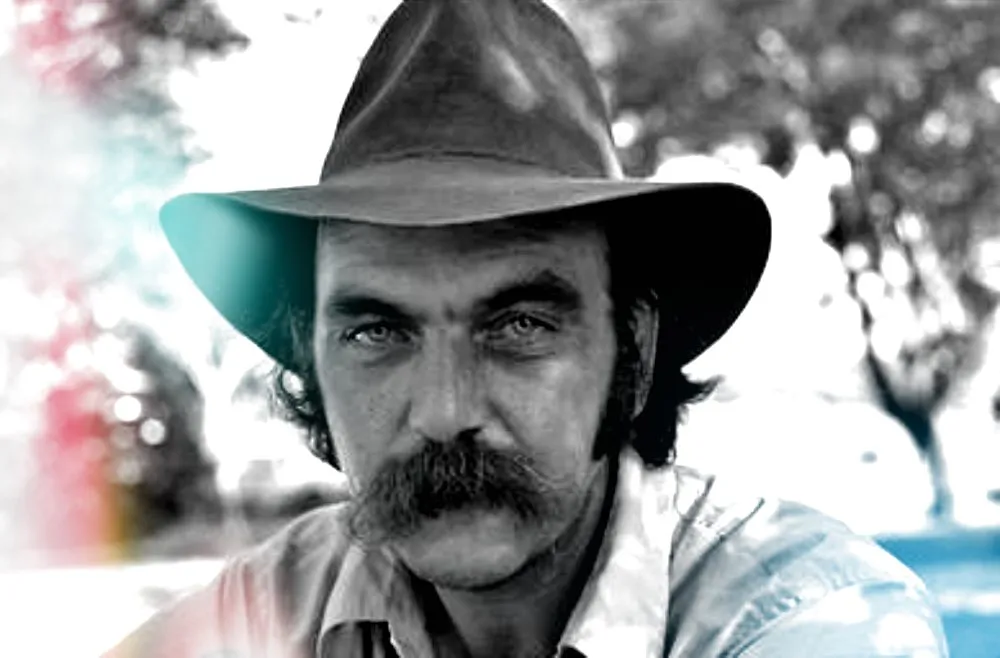
Blaze Foley wasn’t your typical country music star. The man who lived in a treehouse and got kicked out of his own funeral was a true Texas outlaw with a heart of gold. His songs, raw and honest, captured the struggles of life on the fringes, but beneath the gruff exterior was a wellspring of beautiful melodies and poignant lyrics.

Foley’s life was as unconventional as his music. He earned the nickname “Duct Tape Messiah” for his, well, liberal use of duct tape to fix everything from guitars to clothing. This aversion to materialism and focus on pure creation resonated in his music. His songs, covered by legends like Merle Haggard and Willie Nelson, brimmed with authenticity, drawing on his own experiences of love, loss, and the road less traveled.
But Blaze wasn’t all sweetness and light. He had a wild streak, a fierce independence that often clashed with the demands of the music industry. He craved recognition but refused to compromise his artistic vision. This duality – the outlaw with a gentle soul – is what makes his music so compelling.
Foley’s tragic end solidified his legend. In 1989, he was shot and killed while protecting an elderly neighbor from a robbery. This selfless act spoke volumes about the man behind the music. Blaze Foley, the duct tape-wielding enigma, died a hero.
Today, Blaze Foley is considered an Americana icon. His influence is felt by countless musicians, and his story continues to inspire. He may not have achieved mainstream success in life, but his legacy – one built on raw talent, unwavering honesty, and a hero’s heart – is forever etched in the tapestry of American music.
The Texas Troubadour
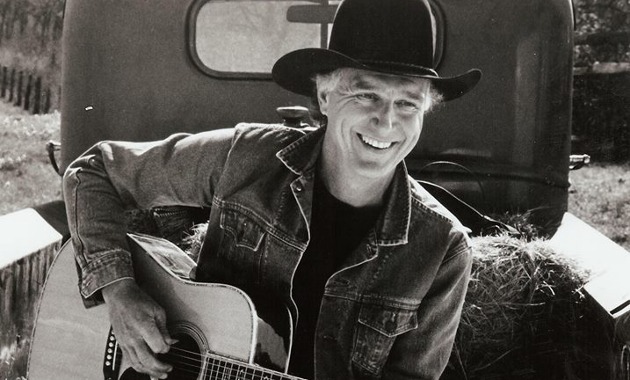
Ah, Jerry Jeff Walker – a name synonymous with good times, good tunes, and maybe a little too much good tequila. This wasn’t your average, rhinestone-suit wearing country crooner. Jerry Jeff was a wildflower blooming in a field of perfectly manicured lawns, a walking party with a guitar strapped to his back.
Born Ronald Clyde Crosby (can you imagine calling Jerry Jeff that?), the music bug bit him early. He wasn’t afraid to hitchhike across the country, busking for his next meal and a place to crash – sometimes a comfortable bed, sometimes a friendly park bench. It was on these adventures that he stumbled upon the story of a down-and-out dancer named Mr. Bojangles, a tale that would become his signature song and a surprise international hit.

Jerry Jeff eventually landed in Greenwich Village, the heart of the folk scene in the 60s. But folk wasn’t wild enough for him. He craved a sound that reflected his own rambunctious spirit, a blend of country twang and outlaw swagger. This quest led him to Austin, Texas, a city already buzzing with musical mavericks like Willie Nelson and Waylon Jennings. Jerry Jeff fit right in, becoming a founding father of the outlaw country movement.
Now, Jerry Jeff wasn’t just about the music. He was the king of the all-night jam session, the guy who could turn a Tuesday afternoon into a three-day bender with enough stories to fill a dusty Texas bar. He was known to share his stage, his microphone, and sometimes even his breakfast tacos with whoever felt like joining the party. His generosity extended beyond music. He championed the careers of younger artists like Robert Earl Keen and Pat Green, his influence echoing through generations of Texas music.
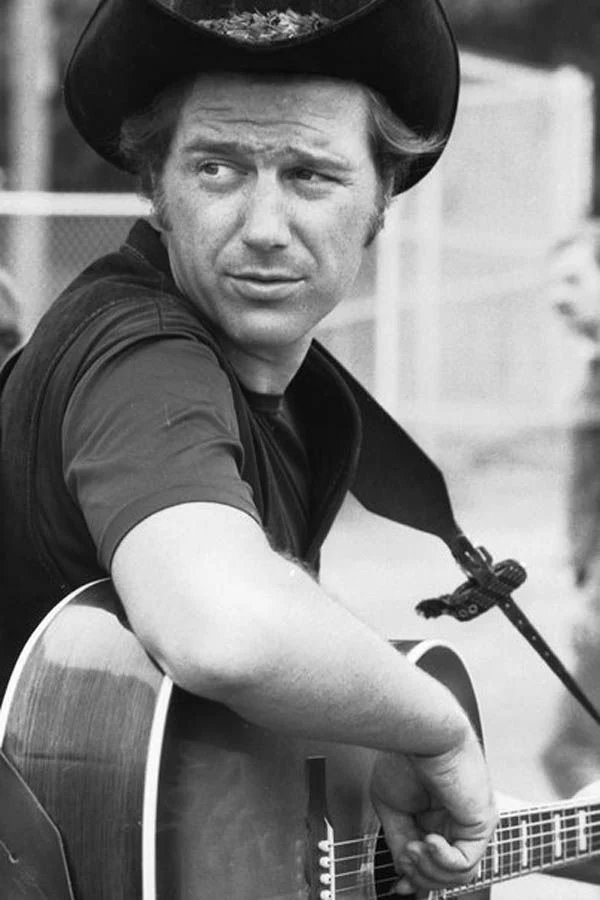
Speaking of good times, Jerry Jeff had a certain fondness for a certain tropical paradise. He and Jimmy Buffett became fast friends, their shared love of music and, ahem, “island life” creating a legendary bond. Imagine two free spirits with guitars, a microphone, and a seemingly endless supply of margaritas in Key West – pure magic, folks, pure magic.
Jerry Jeff may have left us in 2020, but his spirit lives on in every honky-tonk with a worn dance floor, every campfire singalong, and every heart that beats to the rhythm of a good story and a good song. So, next time you hear “Mr. Bojangles” or feel the urge to raise a glass to a life well-lived and a whole lot of fun, remember Jerry Jeff Walker – the outlaw with a heart of gold, a guitar case full of stories, and a legacy that will keep the party going for years to come.
The First Real Deal Outlaw Album
It’s been over 50 years since the 1973 release of Jerry Jeff Walker’s iconic record, ¡Viva Terlingua!, and its impact on the music scene can’t be overstated. It was more than just an album; it was a shot of tequila spit in the face of a Nashville establishment that was starting to feel a lot too polished and a little too tame.

Here’s the thing: ¡Viva Terlingua! wasn’t some studio-produced, perfectly-tuned masterpiece. It was a collection of songs recorded live in a ramshackle bar in the middle of nowhere Texas – Luckenbach, a town with a population that could be counted on one finger and a whole lot of dusty charm. The record captured the raw energy of Jerry Jeff and the Lost Gonzo Band (a name that perfectly embodied their free-wheeling spirit), trading licks and stories with the kind of camaraderie that only comes from countless nights playing together in smoky dives.
But ¡Viva Terlingua! wasn’t just about loose jams and good times (though there were plenty of those). It showcased Jerry Jeff’s songwriting chops, with tunes such as “Little Bird” and “Gettin’ By” and it was filled with tales of outlaws and dreamers, heartbreak and hope, all delivered with a wink and a grin. Songs like”Desperadoes Waitin’ For a Train” written by Guy Clark, “London Homesick Blues” by Gary P. Nunn and “Up Against the Wall Redneck Mother” written by Ray Wiley Hubbard became anthems for a generation who felt like outsiders, searching for a place to belong.
The success of ¡Viva Terlingua! did more than just launch Jerry Jeff’s career. It became the unofficial soundtrack of the outlaw country movement. It proved that music didn’t need to be polished to be powerful, that authenticity and honesty could resonate with audiences just as much as perfectly-coiffed hair and million-dollar studios. It gave a platform to those artists like Guy Clark and Gary P. Nunn, who were just as tired of the Nashville machine.
And Austin, Texas? Well, Austin became the outlaw country capital, a haven for musicians who wanted to create their own sound, their own rules. ¡Viva Terlingua! may have been recorded in a tiny bar in the middle of nowhere, but its impact echoed across the country, forever changing the landscape of American music.
The Big Wrap Up
You know what? We’ve only scratched the surface of the outlaw movement’s incredible cast of characters. From Steve Earle’s poetic storytelling to Johnny Paycheck’s blue-collar anthems to Willie Nelsons distinctive guitar sound and Waylon’s questions about how Hank did things, this movement was a treasure trove of talent. But hey, there’s only so much room on the barstool, right?
Here’s the thing: the outlaw movement wasn’t just about music. It was a middle finger to conformity, a kick to the groan of the corporate suits and a resounding “no thanks” to the cookie-cutter mold the Nashville establishment tried to squeeze everyone into. It was a celebration of individuality, a testament to the power of one voice refusing to be silenced. It showed aspiring artists everywhere that it’s okay to break the rules, to create something authentic and true to yourself, even if it ruffles a few feathers.
The outlaw movement reminds us that the most powerful art comes from embracing who you are, not who someone else wants you to be. It’s a lesson that goes beyond music, a reminder to everyone to stand tall, be your one and only true self, not just some face in the crowd.
So, the next time you feel the pressure to conform, crank up some outlaw country, let loose, and dare to dream a little bigger and sing a little louder..’cuzz you’ve got something special to offer the world, and that’s a whole lot more valuable than fitting into some pre-made mold.
Remember, always be unique.